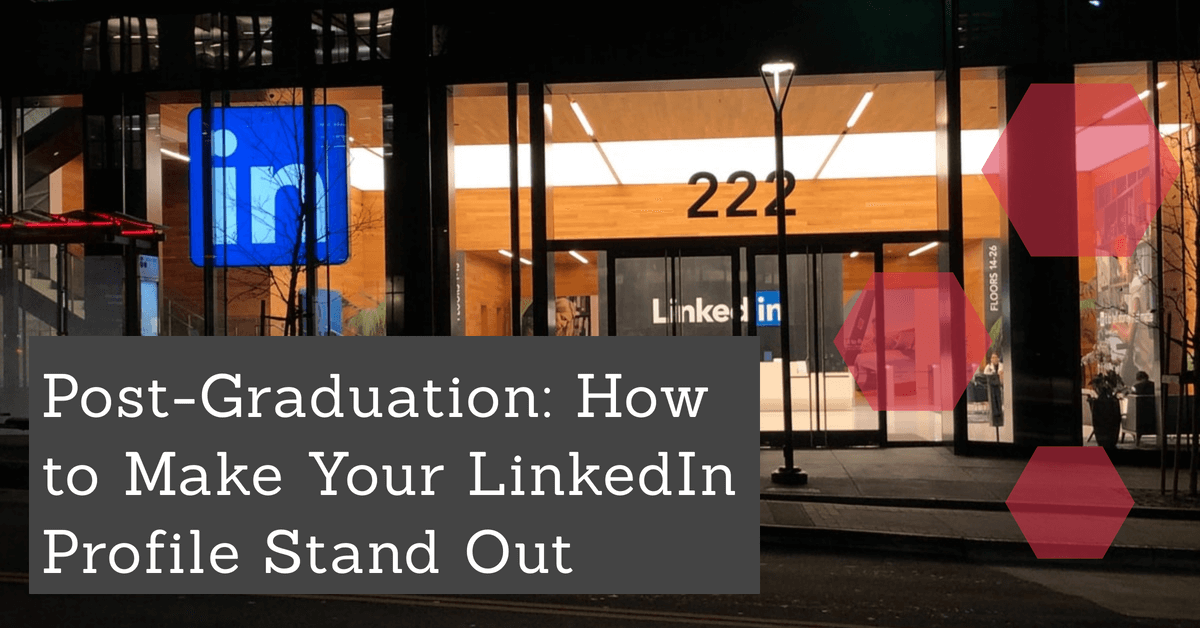Post-Graduation: How to Make Your LinkedIn Profile Stand Out
 While you’re in school, it’s hard to think about anything other than upcoming deadlines and projects. After you start your senior year, you learn to juggle the classroom responsibilities with enjoying your last college experiences. At the same time, everyone’s wondering where they’ll work after graduation and how they’ll transition into their post-college life.
While you’re in school, it’s hard to think about anything other than upcoming deadlines and projects. After you start your senior year, you learn to juggle the classroom responsibilities with enjoying your last college experiences. At the same time, everyone’s wondering where they’ll work after graduation and how they’ll transition into their post-college life.
It’s smart for students to get a start on applying to jobs early, but you’ll need more than your resume. Employers now look for potential recruits on the internet and rely on what they find to decide if they should schedule an interview. One essential resource for recruiters is LinkedIn, which is where college students should focus their attention before submitting job applications.
If you’re wondering how to find a job after graduation and make your LinkedIn profile stand out, check out these easy tips any student can use. They’ll develop your profile so your online presence shines, helping you score more interviews and potentially land a job more quickly.
1. Pose for a Headshot
College students are no strangers to being online. You may already have years of experience with managing your social media profiles, so you know what it’s like to choose a profile photo. While that beachside picture or selfie with your friends might look great on Instagram, it’s not how you’d want to look when meeting a potential employer.
Instead, pose for a headshot specifically for LinkedIn. You can browse other photos of current LinkedIn users for inspiration if you need help picturing what it should look like. Dress in business attire and pose in front of a blank wall. Make the picture classy and timeless, so employers want to meet you in the months to come.
2. List Any Important Experience
Most young people know what it’s like to work. You may have worked at a restaurant or two in high school or found a career-oriented position in your college town. Those jobs are important, but you’ll want to list any experience that’s relevant to the jobs you’ll apply to.
The grocery store clerk position might not seem to have anything in common with the accounting job you want, but you can emphasize your experience in customer service or managing the register. Think through the skills you learned at each job on your resume and put the most relevant positions first on your LinkedIn profile. You can do the same for volunteer opportunities if you haven’t worked before.
3. Write a Strong Summary
Your LinkedIn summary is how you’d describe yourself to an employer. It should show off your strengths and catch the eye of anyone scrolling through applicants. You can easily write your summary in minutes when you know what hiring managers tend to look for. Things like technical skills, leadership positions and what you hope to learn make a difference in getting hired.
You can optimize your LinkedIn profile when you use specific recruitment keywords in your summary, bio headline or job sections. These keywords will help show off your profile in LinkedIn searches and flag it when employers put your resume through recruitment programs.
4. Use the Additional Profile Sections
Additional profile sections are useful for people who don’t have a lot of work experience, but anyone can use them to make their profile stand out on a job application.
This is where you can fill out more information on any internships, contracts or even prizes you’ve earned in the past. Make sure to add anything else that sets you apart from everyone, like additional languages you speak or certifications you’ve completed.
5. Link to Previous Work
Artists, writers and anyone with design portfolios can link to previous work on their profiles so employers don’t miss out on examples of your work. It’s an easy way to improve your profile and increase your chances of getting hired.
Link to any documents, presentations or other forms of rich media that employers might be interested in. This includes news articles that feature you and any media projects you’ve worked on.
Keep It Updated
As you complete your senior year, be sure to update your LinkedIn profile frequently. You’ll quickly learn how to navigate your profile and polish it so employers can’t help but schedule an interview — and soon, you’ll be starting your first professional job.
About the Author
Alyssa Abel is an experiential education writer with a love for learning. Read more of her work for students and educators on her blog, Syllabusy.


